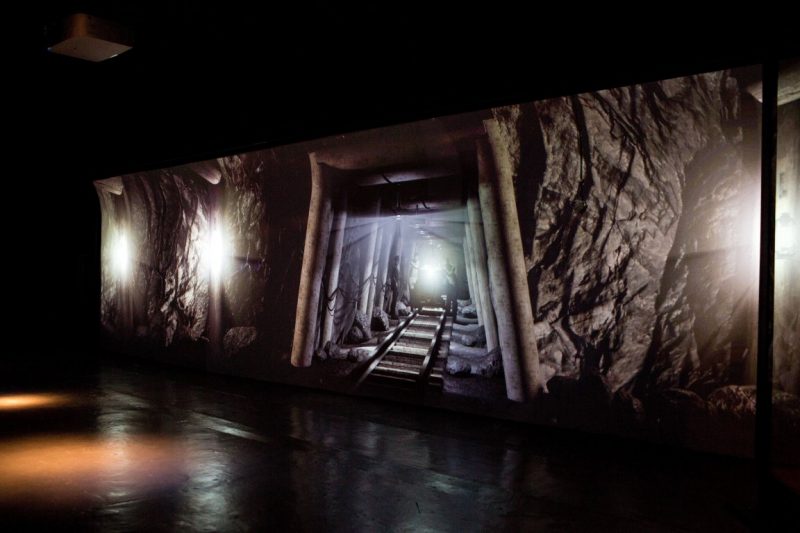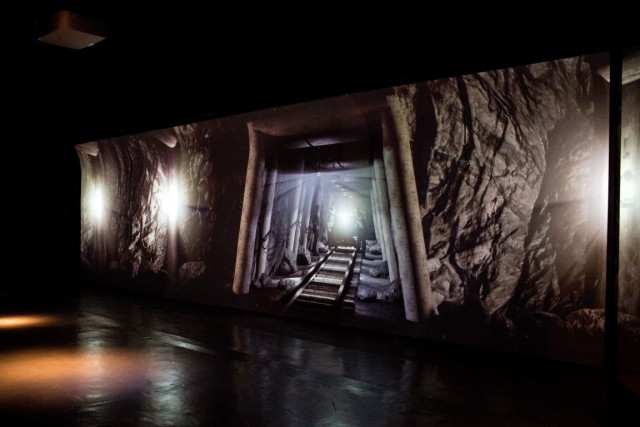The physical traces of the Channel Island of Jersey’s wartime occupation remain like battle scars on the landscape; concrete defences, bunkers, fortifications and tunnels. What is less visible is the story of how they came to be built. Until now.
The Jersey War Tunnels or Hohlgangsanlage 8 as the location was known during the war, is over a kilometre of German underground tunnels that were constructed within two years on the Channel Island of Jersey. They form part of the intense effort made by the Germans to fortify the islands as part of Hitler’s Atlantic Wall – 10% of the total steel and concrete for the project was allocated to the Channel Islands alone, putting them among the most heavily fortified islands of World War II. To accomplish this, the German labour force, Organisation Todt (OT) brought over 5,000 workers to the islands, 45% of which were slave or forced workers from occupied countries.
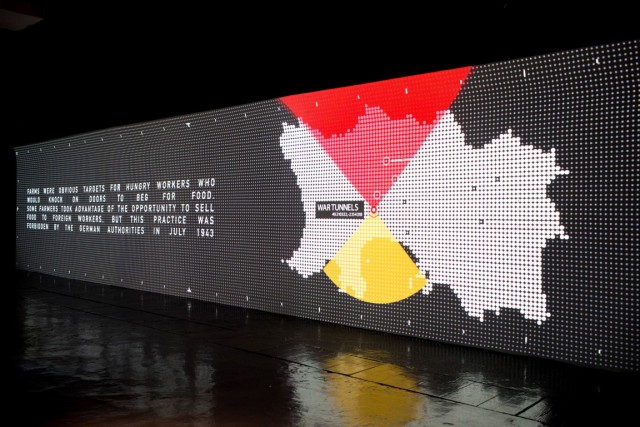
In 2014, Jersey War Tunnels approached local creative studio The Observatory to begin work on an exhibit that would tell the story of the labourers and slave workers and communicate the story’s important historical significance in an innovative way.
Ben Hickingbotham, Creative Director of The Observatory said: ‘As a production collective of designers, illustrators, animators, sound designers and writers, we knew we could package up this evocative and emptional archive material and deliver it in an engaging, immersive and visually poetic installation to complement this individual environment. Our first step was to research the history in detail and then to distill that archive material into a narrative to engage all demographics of visitor, allowing them to immerse themselves and understand important stories that would otherwise be lost in time. In delivering this, our aim was also to elevate the experience for visitors. Technology has become so widely accessible that attractions, museums and public spaces need to reflect this, providing opportunities to learn through experience with modern media and methods creating immersive education with the impact to truly leave a legacy.’
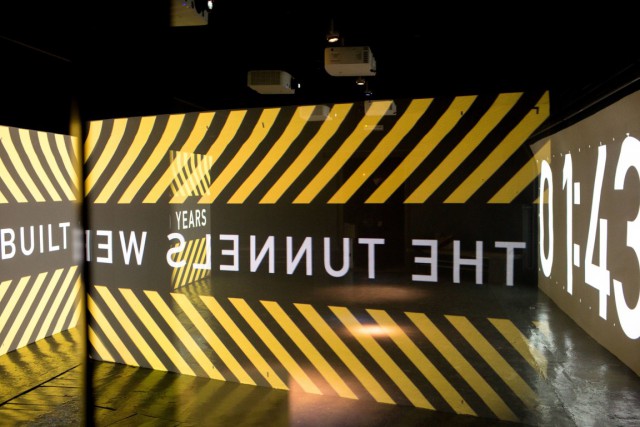
Conditions for the workers who built the War Tunnels were harsh, with 12-hour shifts, lack of food and severe treatment as standard fare for the slave workers. Deaths occurred from malnutrition, disease or exhaustion, and as part of the research, The Observatory discovered that 22 workers died while underground, during the dangerous process of excavating the tunnels, when the unstable shale rock was liable to collapse at any time.
The installation is within one of the tunnels in the OT Gallery, and uses projection mapped technology on both sides of the tunnel, with each wall telling a story. One side uses a modelled, wire-framed and rigged photorealistic interpretation of how the slave workers would have looked, a snapshot of history to take visitors back in time. All the materials that were applied to the wireframes – granite, timbers, shale rock, fabrics, leather and metal implements – were photographed from the existing site to ensure the visual representation was as accurate to the time period as possible.
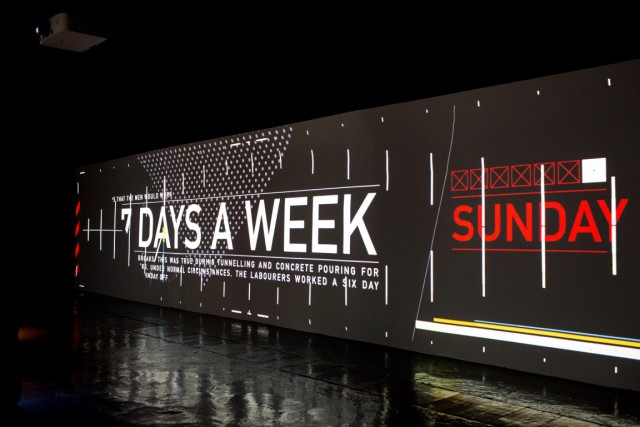
Once all details had been meticulously defined, the design was animated to show how much of a struggle the OT workers had to endure to extract over 14,000 tonnes of shale during the two-year excavation and construction process. The representation starts with an atmospheric glimpse into a scene of the slave workers pushing a mine cart towards the viewer, with a German officer shouting his orders. With no barriers between the viewer and the experience, the effect created is truly immersive, pulling the viewer into the story and allowing them to see and feel the scene for themselves. When the workers get closer to the viewer, the lights spark, flicker and extinguish as if the tunnel is collapsing – a real and present threat that the OT workers faced.
The other side of the installation tells the story of the slave workers in facts and statements, designed to be experienced visually as a series of poetic short stories. The closer the viewer looks, the more detail they’ll notice. To represent the 5,000 OT workers in Jersey, the map is made of a dot matrix grid constructed of 5,000 dots, and the geography visually explains where in the world the OT workers came from.
Ben Hickingbotham said: ‘The typeface used to tell the story is a German font from the 1940s (Din 1451) that we believe was used by the SS and the Luftwaffe. We used the limited selection of archive photography from that period, digitised the shots and gave them relevant treatments to tell the story accurately using depicted characters. As a viewer, you’re invited to look closely into these haunting images to read the expressions in their faces and feel the torment in their eyes.’
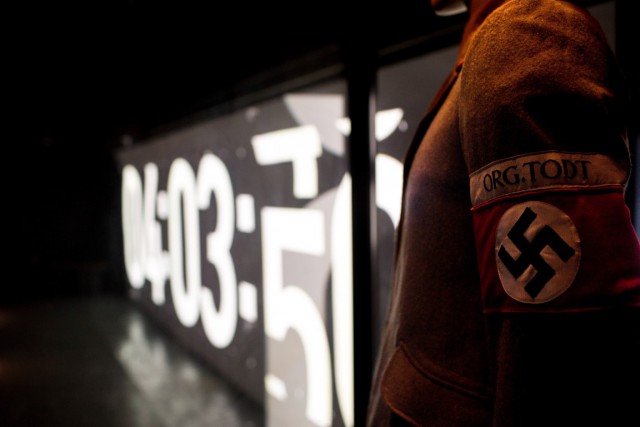
‘Our aim was also to tell the unfinished stories. The mystery surrounding the tales of escape, communicated through visual techniques that allow the viewer’s mind to fill in the gaps and come to their own conclusions. The section titled Escape and Death turns into a memorial for the 22 men known to have died in the construction of the tunnels. Twenty-two heart rate monitors appear on the screen and flatline, and a typographic transition paired with resonating sound design leaves an impression for the viewer to contemplate and allow the mind to draw its own conclusions. It was always very important to us that the installation was fully immersive, so that we could ensure the hardships, struggles and rich historical stories could be brought to life using design and technology, and not lost.’
The timings of the installation are critical for visitor wayfaring. as the exhibit is a permanent, automated installation that runs for nine hours a day, six days a week, and is timed to a tenth of a second to ensure the OT environment is always telling an active story. A countdown timer runs on the adjacent wall as a visual clue, alerting visitors who enter the space halfway through one of the stories that new content is beginning. This was an important consideration for the designers as with no ticketing or gatekeeper, they needed to create an environment that would engage, intrigue and hold the visitor’s attention regardless of their arrival point. This installation is the halfway point of the Jersey War Tunnels visitor journey, providing an opportunity to capture people’s attention – either awakening the senses with an engaging experience, allowing them an area for reflection or impressing on visitors the importance of these curated stories and their legacy.
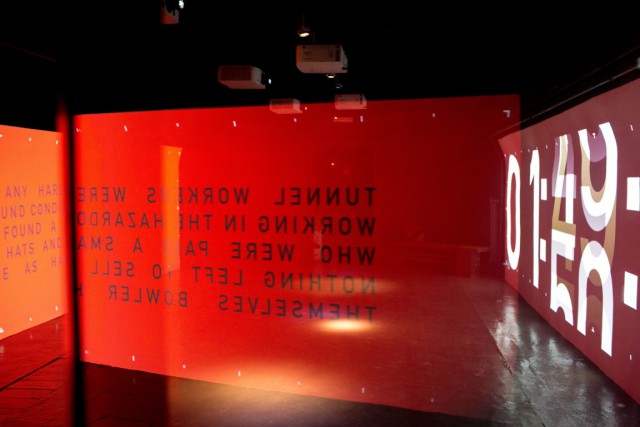
The environment was conceived to be immersive in both a visual and aural way. The soundscape is completely bespoke, and designed to reinforce the impact of the storytelling with certain frequencies used to evoke fear, anticipation and heighten engagement. It features eerie underlying soundtrack tones which are made up of sounds of children in a playground with the pitch stretched to create a haunting effect. The analogue noises are sampled from communication equipment from the 1940s and the clicks are from an Enigma machine. The overriding aim was to steer clear of any clichéd sound effects and focus on a modern interpretation to ensure there was complete synergy with the contemporary visuals and ensure that all the assets from the storyboard, animation, research, narrative and design worked together with total unity.
The tunnel is a unique environment that disorients your senses, and allows you to be fully immersed in the storytelling and sound design. The Observatory explains: ‘Sound is a powerful medium – while you can look away from visual material, you can’t shut your ears. The soundscape is composed to amplify that, ‘getting under the skin’ of visitors and capturing people’s minds as they walk through the space. We’ve deliberately left room within the narrative for people to draw their own conclusions. Rather like the tunnel environment itself, it’s open-ended – as all good storytelling should be.’
Bringing history to light in an underground tunnel space required complex projection technology. Delta Production Services Director Cristin Bouchet and Project Manager Darren Fry explain: ‘From an original brief to provide a simple 3-projector edge blend of a custom designed animation on one wall of an underground tunnel at the Jersey War Tunnels this project grew to encompass both walls of quite a narrow (450cm wide) 1940s tunnel, using a mixture of graphics and CGI perfectly synchronised to create a 8-minute projection as part of the Jersey War Tunnels exhibition.’
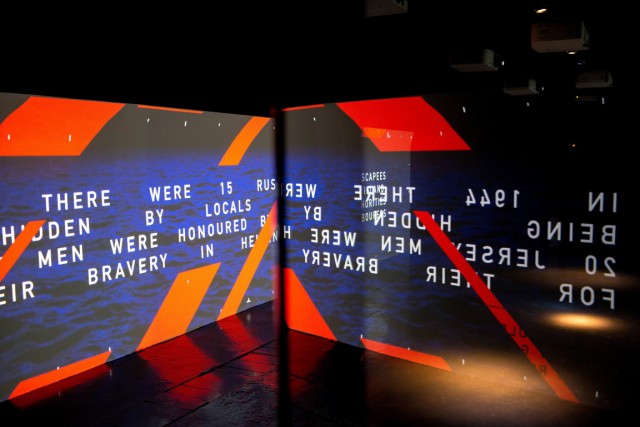
‘Simultaneously projecting onto both walls of the exhibit space was complicated by the projection surface itself. The actual tunnel walls were constructed in the 1940s by slave workers. As they form the inside of a tunnel, the projection is directly onto an uneven parabolic surface. The six projectors rig – three for each side – were mounted at high level from the tunnel ceiling, The animations run in a looping sequence together with a specially commissioned 5.1 audio track and are timed to be seamlessly synchronized. The tunnel space certainly helps to increase the drama of the visitor experience. There aren’t that many spaces where the viewer is enclosed, and it can be a fully immersive projected environment.’
Cristin Bouchet adds: ‘Working in this hostile environment did pose a few unusual challenges however. The tunnels are 30 metres underground with zero connectivity, so it was a hurdle but occasionally quite refreshing to carry out the install without using the internet, use any online software or even get mobile phone reception. The hardware installation was carried out over two weeks and during that time it was a total blackout in terms of communicating with the outside world!’
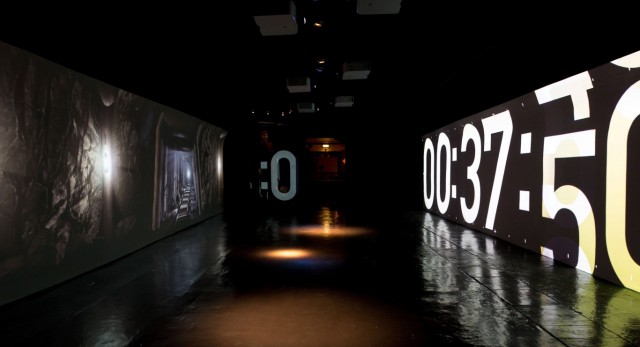
The immersive installation, which opened to the public in March 2015 has been well received. Roger Colyer, a Director for Jersey War Tunnels said: ‘One of our aims in regard to the “Captive Island” Exhibition is to keep it in the forefront of the local population and tourists alike and each year improvements and changes have been made with this aim in mind. We were very impressed with previous work carried out by The Observatory, and this led the directors of the company to seek to improve the gallery dedicated to the lives of the slave and forced workers.
The directors also wished to produce something iconic that commemorated the 70th anniversary of the ending of the Occupation as well as to use Jersey-based firms to carry out this work. We are extremely pleased with the results achieved by the team at The Observatory.’ Debbie Prosser, also a Director added: ‘The Jersey War Tunnels directors wanted to ensure that the new addition to the exhibition was high tech and impressive, and that has certainly been achieved with this installation. However, this is not just about the technology, and we have been impressed by the amount of research which went into the project by the team at The Observatory. Their passion for the project was evident from start to finish.
This new installation can be viewed as part of the OT (Organisation Todt) Gallery at Jersey War Tunnels. http://www.jerseywartunnels.com
Bringing history to light. from The Observatory on Vimeo.
Watch the ‘Making Of’ video: https://vimeo.com/121445535
